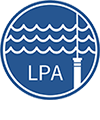Permafrost affects nearly 50% of the Canadian territory, and it is found almost everywhere in Northern Quebec. Recent climatic warming has triggered partial melting of the permafrost in subarctic regions. This process brings a local ground subsidence which creates water-filled depressions called «thermokarst lakes». Recently observed in many northern regions, these lakes seem to have a major influence on carbon cycle because their formation can release greenhouse gases (CO2 – carbon dioxide; CH4 – methane) that were once trapped in permafrost. However, these observations are sparse for the moment. Now projections for the next century talk about an increase in actual climatic tendency. Given the spatial and ecological importance of permafrost in northern environments, we must understand rhythm and consequences of its melting on ecosystems, just as processes that are implied. Thermokarst lakes stand in the front line of these concerns.
General objective of this project is to UNDERSTAND EVOLUTION AND DYNAMIC OF THERMOKARST LAKES IN NORTHERN QUEBEC, taking past and recent environmental changes into account. More specifically:
1. To study actual and past sedimentary processes on a site where we can find thermokarst lakes in different evolution steps (from their formation to their disappearance). These conditions are combined in subarctic region, where continuous and discontinuous permafrost zones meet.
2. To reconstruct paleolimnological conditions of these lakes with fossil diatoms preserved in sediments. Some species are indeed good indicators of past conditions in the lakes (ex: water colour, alkalinity, dissolved organic carbon).
Study site is located N-E of Kuujjuarapik-Whapmagoostui (55°17’N; 77°46’W). Many thermokarst lakes have been located and summarily sampled during previous field trips (2006-2007). In order to determine their sedimentological properties (1st objective), we propose to survey underlying beds with ground-penetrating radar (GPR), to get sediment cores of lake bottom and to analyse these samples with classical (grain size analysis, scanning electronic microscopy, magnetic susceptibility) and innovative (X-microfluorescence, tomography, image analysis) methods. These methods are developed in Centre Eau, Terre & Environnement (INRS-ETE). Finally, paleolimnological reconstructions (2nd objective) will be done analysing fossil diatoms and pigments preserved in sediments, applying models developed in Centre d’études nordiques (CEN).
Results of this research will increase substantially our knowledge of natural processes implied in the formation and the disappearance of thermokarst lakes, in addition to their influence on landscape in a changing climate context. In a broader perspective, this project is included in a large joint research program (Laval University – INRS-ETE) about the contribution of thermokarst lakes in global terrestrial carbon cycle in northern environment, especially greenhouse gas emissions in Quebec.



